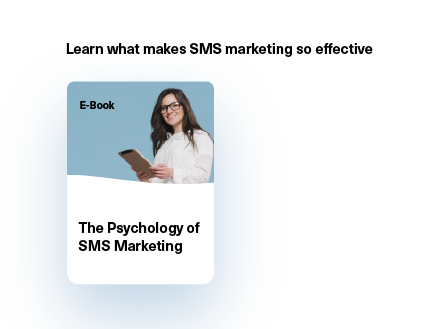Marketers will use SMS messaging to their advantage. Though, reaching people via SMS can be challenging, since doing so involves:
Effective customer engagement
Offering incentives (i.e. downloadables, sales, promos, etc.)
Budgeting
Target audience(s)
Overall goals of your SMS campaign
Plus, many phone users often get “SMS fees” – typically $0.10 or more per message – which can make them wary about how they respond to such messages from companies and brands.
Regardless, businesses will use this marketing tactic to reach more customers.
How SMS Works
SMS works as follows:
Location-based service opt-ins can be integrated well with existing SMS opt-ins.
No matter the reach or cost structure, location-based SMS lines them up nicely.
When a user (opted-in and located) is reached, marketers can present him or her with a wide range of complementary options (i.e. coupons, promos, etc.).
Once the user interacts with the SMS, the business will succeed in reeling in and keeping that customer.
Why SMS Matters
Enabling location-based SMS marketing allows you to send customers SMS messages at any given time while saving time and money doing so. Plus, with today’s technology, SMS messaging hasn’t gone obsolete yet. In fact, despite the rise of application and mobile Web penetration, SMS is still needed to bring about customer reach.
Remember: Customer engagement is vital to any business. SMS messaging will get you there! Don’t just engage with the few loyal customers that you might have; engage with ALL your customers – old AND new.
By leveraging SMS marketing in your favor – and based on customer location(s) – your business will be able to speak to everyone in your target audience, meaning that no loyal customer goes missing or ignored.
With that in mind, there are various ways for your marketing team to set up location-based SMS advertising. In this quick guide, we’ll explore three methods that are widely popular in the marketing industry. Plus, we’ll provide examples for said methods, so that you can better understand how each of them works.
So, let’s jump right in!
1) Location-Based Telesales
Want to increase appointment scheduling on call-center-based telesales? Then look to enabling location-based telesales. Location-based SMS, along with click-to-call-based CTAs can be beneficial to your mobile marketing campaign.
National automotive brands like MINI want to reach more customers, especially millennials. Therefore, they would use their "Tweet to Test Drive" campaign to reach more younger drivers on their mobile devices and offer them a chance to test-drive vehicles such as the MINI Cooper Countryman. So, instead of directing calls to national call centers, enabling click-to-call can bring more customers to you.
2) Ask For Customer Location
Believe it or not, zip codes can be helpful when you’re reaching out to more people. The good news is, you can implement this strategy with a simple web form.
Domino's, for example, lets customers search for restaurant locations. Customers simply fill out a quick web form, and they’ll be asked if whether or not they want to create an account. Once they create an account with Domino’s, you’ll have their personal information on file, including their zip code and phone number. From there, the restaurant can send customers messages whenever there’s a sale or promotional event.
With zip codes, you can segment them to create location-specific audiences, along with location-based marketing.
3) Geofencing
Location-based SMS lets you send proximity alerts to customers via geofencing. Geofencing is created around brand-relevant locations like local retail shops, stadiums, a geographical feature (i.e. oceans, lakes, etc.), etc. Customers who opt for geofencing alerts, they’ll get a text message with a time-sensitive offer, which can result in sales conversions.
For example, Bob's Discount Furniture displays location-specific keywords in-store, on receipts, and online using geofences. Whether customer and business locations are close together, or if they’re far apart from each other, geofencing can still tell the business about the area codes and segment them.
Conclusion
So, you see, sending mass texts to users isn’t as hard as it looks. Even when dealing with customers in multiple locations, SMS marketing lets you segment your audiences in the following ways, as discussed in this article:
Location-based telesales
Asking for customer location via web forms, AND
Geofencing
Once you have an SMS marketing campaign strategy in place, you’ll soon see more and more users coming to you, and you’ll most like see more conversions from successful sales.




